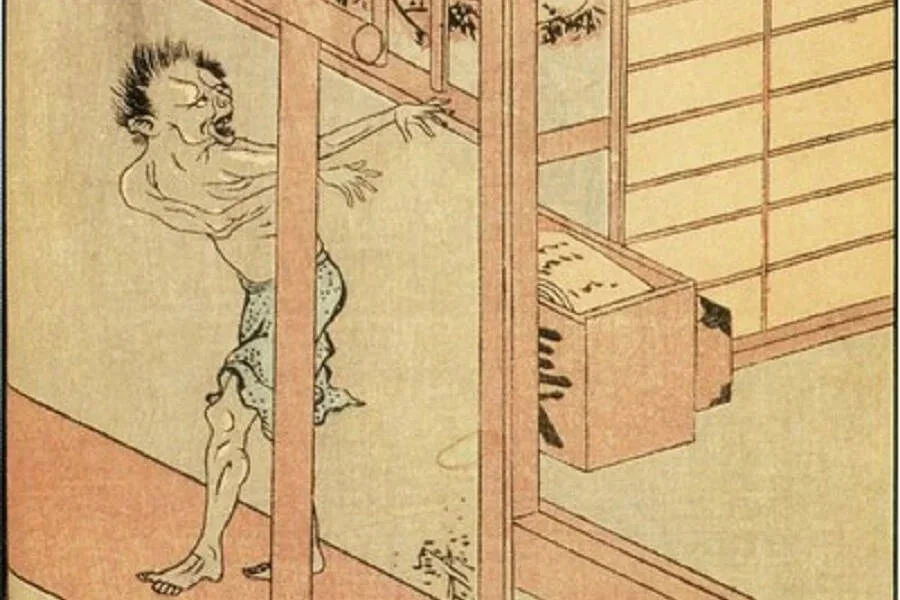Shinigami (死神), or "death gods," are spiritual entities rooted in Japanese folklore, embodying the inevitability of death and the transition between life and the afterlife. Unlike the Western Grim Reaper, shinigami are neither uniformly malevolent nor entirely benevolent. Instead, they exist as neutral arbiters of fate, guiding souls to their final destination. Their presence is often tied to karmic cycles and the delicate balance of the spiritual realm.
Appearance and Demeanor
Shinigami are portrayed with great variation, reflecting their duality as both serene escorts and ominous harbingers. Their forms range from elegant, robed figures with ethereal, calming presences to shadowy, skeletal silhouettes evoking dread. Often, their appearance is shaped by the culture or artistic interpretation, serving as a mirror for humanity’s complex relationship with death.- Traditional Depictions: Humanoid, cloaked in dark garments, and bearing tools like lanterns or scythes to guide lost souls.
- Modern Variations: Stylized as anything from mysterious guardians to terrifying spirits, frequently tailored to fit the tone of contemporary media.
Cultural and Religious Origins
The concept of shinigami gained prominence during the Edo Period (1603–1868), deeply influenced by the spiritual frameworks of Buddhism and Shinto:- Buddhism: Tied to the concept of samsara (the cycle of birth, death, and rebirth), shinigami often serve as facilitators for the soul’s journey between incarnations.
- Shinto: Rooted in the veneration of kami (spiritual beings), shinigami are sometimes seen as shadowy counterparts to otherworldly deities, tasked with overseeing death’s sacred processes.
Symbolism and Role
Shinigami represent more than death itself; they personify the inevitability of life’s end and the fragile balance of existence. In this role, they are:- Guides: Leading souls to the afterlife, ensuring that the cycle of life and death remains uninterrupted.
- Arbiters: Enforcing karmic justice, occasionally delivering punishment or retribution for those who upset cosmic balance.
- Observers: Watching humanity from the periphery, their actions a reminder of mortality’s shadow over all living things.
Modern Adaptations
In contemporary Japanese media, shinigami have transcended their folkloric roots, evolving into complex and dynamic figures:- Manga and Anime: In works like Death Note and Bleach, shinigami appear as protagonists, antagonists, or morally ambiguous characters, exploring themes of mortality, power, and responsibility.
- Literature and Theater: Shinigami continue to feature in modern plays and novels, where their presence often serves as a narrative tool for existential reflection.
- Pop Culture: They have become synonymous with Japanese interpretations of death in video games, films, and art, often adapted to suit global audiences.
Enduring Legacy
The shinigami remains a powerful symbol in Japanese culture, representing humanity’s ongoing contemplation of death. Whether depicted as fearsome or compassionate, their presence reminds us of life’s impermanence and the unseen forces shaping our destinies. As guides, watchers, and enforcers, they bridge the divide between folklore and modern imagination, ensuring their relevance in every era.Basic Information
Anatomy
Descriptions vary widely based on interpretation:
- Traditional depictions: Humanoid with shadowy or skeletal features, often robed in black.
- Modern depictions: Stylized, varying from grim and skeletal to elegant and otherworldly.
- They often carry symbolic tools like scythes or lanterns to guide souls.
Genetics and Reproduction
Shinigami are spiritual, not biological, and thus lack genetic inheritance or traditional reproduction. Some myths suggest they are born from the collective fear of death or manifest through karmic energy imbalances.
Growth Rate & Stages
Shinigami exist outside human concepts of time and aging, often portrayed as ageless or eternal. In creative interpretations, they might evolve based on the karmic energy they process or their fulfillment of deathly duties.
Ecology and Habitats
Shinigami are said to dwell in liminal spaces between life and death, such as:
- Graveyards.
- Thresholds of homes (where spirits traditionally linger).
- Mountains or forests, believed to harbor supernatural activity.
- Imagined underworld realms.
Dietary Needs and Habits
Shinigami do not consume food in a literal sense. Symbolically, they are nourished by the resolution of karmic threads or the fulfillment of death’s natural role in the cycle of existence.
Biological Cycle
As spiritual entities, shinigami do not experience biological cycles. Their "life cycle" could involve stages of power and influence, tied to their role in managing death across eras or cultures.
Behaviour
Shinigami exhibit a wide spectrum of behavior:
- Neutral Guides: Detached and impartial, carrying out their duties with stoic resolve.
- Playful Mischief: Some legends depict shinigami as tricksters, enjoying the chaos their presence causes.
- Vengeful Spirits: Rare portrayals show them as wrathful beings exacting karmic retribution.
- Psychologically, shinigami embody humanity’s complex relationship with mortality, ranging from fear to acceptance.
Additional Information
Perception and Sensory Capabilities
Shinigami are believed to:
- Sense a person's remaining life energy.
- See spiritual threads connecting individuals to their fate.
- Move between the mortal and spiritual realms effortlessly.
N/A—shinigami exist as mythological beings.





Comments